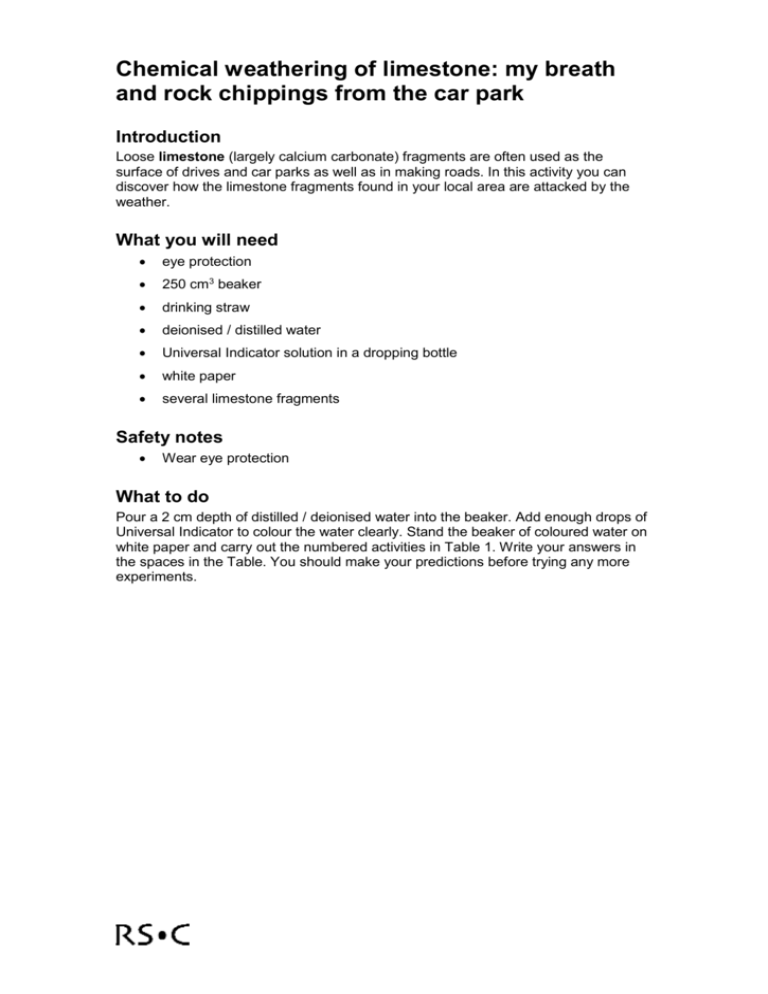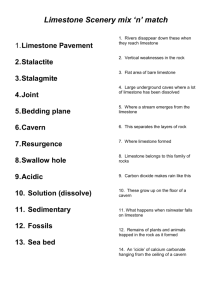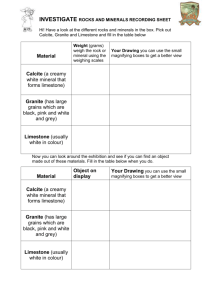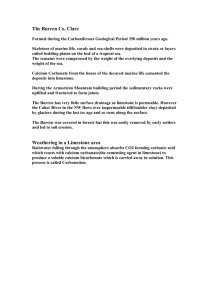Chemical weathering of limestone: my breath and rock chippings
advertisement

Chemical weathering of limestone: my breath and rock chippings from the car park Introduction Loose limestone (largely calcium carbonate) fragments are often used as the surface of drives and car parks as well as in making roads. In this activity you can discover how the limestone fragments found in your local area are attacked by the weather. What you will need eye protection 250 cm3 beaker drinking straw deionised / distilled water Universal Indicator solution in a dropping bottle white paper several limestone fragments Safety notes Wear eye protection What to do Pour a 2 cm depth of distilled / deionised water into the beaker. Add enough drops of Universal Indicator to colour the water clearly. Stand the beaker of coloured water on white paper and carry out the numbered activities in Table 1. Write your answers in the spaces in the Table. You should make your predictions before trying any more experiments. No. Activity – answer the questions in the boxes opposite Indicator colour Reason – why is the indicator this colour? Try out the activity Were you right? Was your prediction correct? If not, what actually happened? 1 What colour is the indicator in the water at the start? Green The solution is neutral _ 2 What do you think will happen to the colour of the water when you blow into it through the straw for some time? Blow into the water 3 If you drop some pieces of limestone into the water you blew into, what do you think will happen to the colour of the water immediately? Carefully drop some limestone pieces into the water. 4 What do you think will happen to the colour of the water after some time? See what has happened some time later _ Where on the Earth might this sort of thing be happening now? _ Table 1 The activities Use your results to write down how limestone outside can be attacked by natural chemicals. Questions Q 1. If we had something that was precious made of limestone, how could we make sure it wasn’t attacked by natural chemicals? Q 2. As water trickles through the soil, it picks up much more carbon dioxide than it does in the atmosphere. How might soil water affect limestone? Q 3. As well as carbon dioxide, rain can contain dissolved sulfur dioxide and nitrogen oxides, how might this change its effect on limestone?







